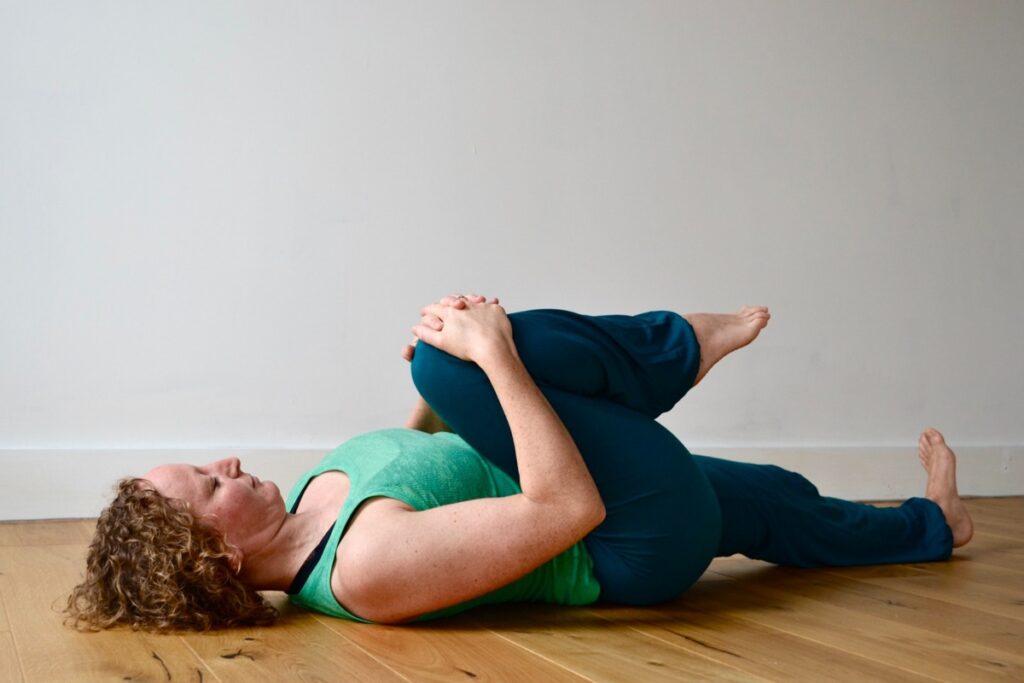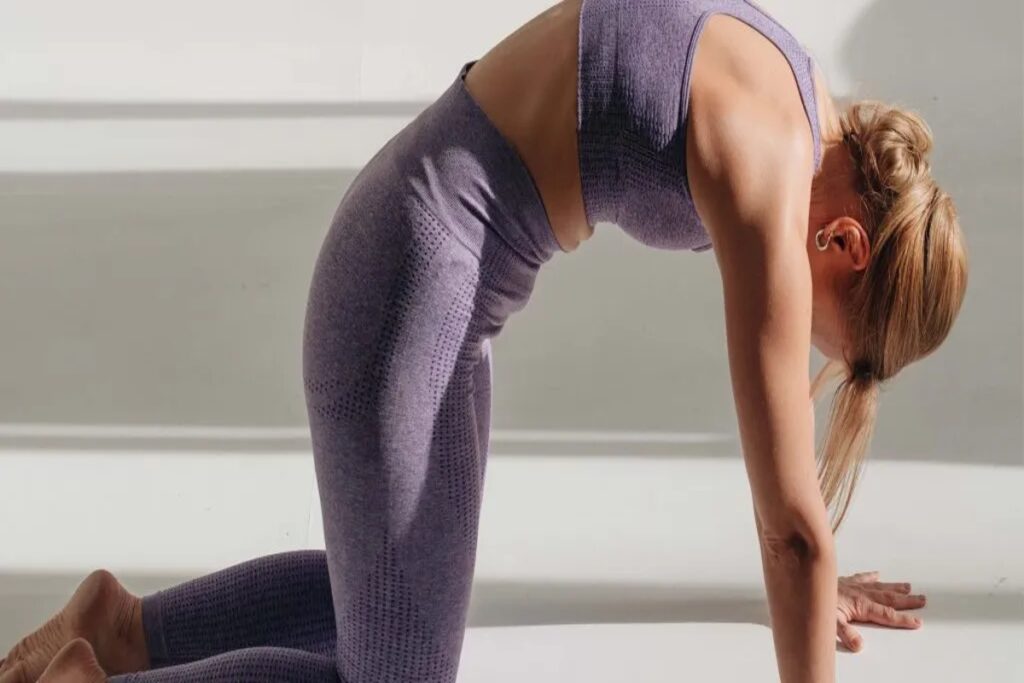Somatic yoga is a powerful and transformative practice that blends the principles of somatics with the traditional postures and philosophies of yoga. At its core, it’s about cultivating deep body awareness, moving with intention, and truly listening to what your body needs in the present moment. Unlike some more vigorous yoga styles, somatic yoga is often slow, gentle, and highly attuned to the sensations within, making it accessible for people of all ages and fitness levels.
The word “somatic” comes from the Greek word soma, meaning “the living body in its wholeness.” Somatic yoga emphasizes the internal experience of movement rather than how it looks from the outside. It encourages you to feel each stretch, breath, and micro-movement as it arises, helping to retrain your nervous system, release chronic tension, and foster a sense of calm and connection.
The Origins and Philosophy Behind Somatic Yoga
Somatic yoga draws inspiration from both the ancient traditions of yoga and the modern field of somatics. Somatics emerged as a therapeutic discipline in the 20th century, popularized by pioneers like Thomas Hanna and Moshe Feldenkrais, who focused on neuromuscular reeducation and awareness through movement. By combining these ideas with yoga, practitioners developed a system that promotes both physical and mental well-being.
This practice teaches that many of our physical limitations and pains are the result of unconscious muscular habits. Over time, stress and repetitive movements can create patterns of tension in the body, which somatic yoga helps to undo. Instead of forcing the body into rigid shapes, it invites you to explore gentle, mindful movements that restore balance and ease.
How Somatic Yoga Differs From Traditional Yoga
At first glance, somatic yoga might appear similar to restorative or gentle yoga styles. But what sets it apart is its focus on internal perception over external form. Traditional yoga often emphasizes alignment and achieving certain poses, while somatic yoga places the priority on how the movement feels to you.
In a somatic yoga class, you might find yourself lying on the floor, performing subtle movements that target areas of habitual tightness. These movements can look simple, but they work deeply to rewire your nervous system and bring your body back to its natural state of relaxation. It’s less about perfecting a pose and more about discovering what’s happening within your body at each moment.
The Benefits of Practicing Somatic Yoga
One of the greatest gifts of somatic yoga is its ability to relieve chronic pain and tension. Many people experience tight shoulders, stiff hips, or back pain as a result of stress and daily life. Somatic yoga helps you become aware of these tension patterns and teaches you how to release them consciously. Over time, this can lead to better posture, increased flexibility, and reduced discomfort, as highlighted by Cleveland Clinic, which notes somatic yoga also supports stress relief, trauma healing, and improved sleep.

Beyond physical benefits, somatic yoga also offers profound mental and emotional rewards. By slowing down and tuning into your sensations, you engage your parasympathetic nervous system — the body’s natural relaxation response. This can help alleviate anxiety, improve sleep, and foster a greater sense of inner peace. It’s a holistic approach that supports both body and mind.
What to Expect in a Somatic Yoga Class
If you attend a somatic yoga class, you can expect a welcoming, non-competitive environment where the emphasis is on exploration rather than achievement. Classes usually begin with a few moments of stillness, allowing you to connect with your breath and check in with your body. From there, the instructor may guide you through a series of gentle, deliberate movements designed to awaken different parts of your body.
You might find yourself doing movements that feel unfamiliar at first, like rolling your pelvis on the floor, slowly arching and curling your back, or letting your shoulders move freely. These exercises help you become aware of muscle contractions you may not even know you’re holding. Often, the class ends with a period of deep relaxation or meditation, leaving you feeling refreshed and renewed.
Who Can Benefit From Somatic Yoga?
One of the beauties of somatic yoga is its inclusivity. Because it doesn’t demand extreme flexibility, strength, or stamina, it’s accessible to nearly everyone. It’s particularly beneficial for people recovering from injuries, managing chronic pain, or living with conditions like fibromyalgia or arthritis. The gentle, mindful nature of the practice means you can adapt it to your own needs and abilities.
Even experienced athletes and yogis can find value in somatic yoga. It offers a chance to slow down, undo tension from intense training, and gain deeper insight into how their bodies move. Whether you’re a beginner or a seasoned practitioner, somatic yoga can enhance your awareness and connection to yourself.
How Somatic Yoga Supports Emotional Healing
Beyond the physical, somatic yoga is also a powerful tool for emotional healing. Many of us carry emotional stress in our bodies, often without realizing it. The gentle, inward focus of somatic yoga helps you uncover and release these hidden tensions. By creating a safe space to feel and process what arises, it can support emotional resilience and well-being.
Some practitioners find that somatic yoga helps them reconnect with parts of themselves they’ve neglected or suppressed. This kind of mindful movement invites compassion and curiosity toward your own experience, which can be incredibly healing. As you learn to listen to your body, you may find a greater sense of self-acceptance and confidence emerging.
Tips for Starting a Somatic Yoga Practice
If you’re new to somatic yoga, it’s helpful to approach it with an open mind and a willingness to explore. Unlike fast-paced fitness classes, somatic yoga thrives on patience and presence. Give yourself permission to slow down and notice even the smallest sensations. There’s no right or wrong way to feel — what matters is your awareness.
You don’t need any special equipment to get started. A comfortable space, a yoga mat, and perhaps a folded blanket or cushion for support are enough. If you prefer guidance, you can look for local classes, online videos, or explore online features like ITS Magazine, which recently covered inspiring stories and expert tips on somatic yoga. Over time, you’ll develop your own intuitive understanding of what your body needs.
Incorporating Somatic Yoga Into Daily Life
Somatic yoga isn’t just something you do on the mat — it can influence how you move and feel throughout your day. As you develop more awareness through practice, you may start noticing when you’re tensing your shoulders at your desk, clenching your jaw, or slumping in your chair. This awareness gives you the power to adjust and release tension in real time.
Even a few minutes of mindful movement during a busy day can help reset your nervous system and restore calm. You might take a break to stretch, breathe, or simply check in with how your body feels. Over time, somatic yoga becomes more than a practice — it becomes a way of being, a habit of moving through life with grace and ease.
Final Thoughts on Somatic Yoga
Somatic yoga offers a profound opportunity to deepen your connection to yourself. It combines the wisdom of yoga with the science of somatic therapy to create a practice that is both gentle and transformative. Whether you’re seeking relief from pain, a way to manage stress, or simply a more mindful approach to movement, somatic yoga can meet you where you are.
By tuning into the sensations of your body and moving with intention, you unlock the potential for healing, resilience, and self-discovery. As you continue your journey, you may find that somatic yoga doesn’t just change how you move — it changes how you live. So roll out your mat, take a deep breath, and let the quiet magic of somatic yoga guide you home to yourself.

